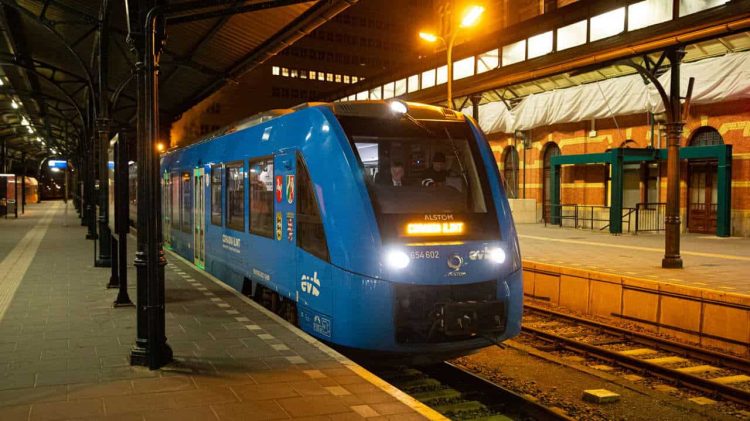Alstom and MOL, Hungary's leading oil and gas company, have signed a Memorandum of Understanding (MoU) to cooperate in examining the use of hydrogen technology in rail transportation.
MOL Group currently produces and utilises almost 150,000 tonnes of hydrogen per year. By signing the MoU, Alstom and MOL have taken a step towards the decarbonisation of Hungary's rail transport network. Alstom will take a key part in the initiative by supplying green alternative fuels.
At COP26 in Glasgow, countries agreed to accelerate their actions to limit global warming and keep it below a target of 2 degrees. By 2030, the EU aims to reduce greenhouse gas emissions by 55% compared to 1990, and by 2050 it aims to achieve net-zero emissions.
Hungary aims to play a leading role in the transition to net-zero. As part of its National Hydrogen Strategy, the country has been investigating the feasibility of introducing hydrogen technology to rail transportation.
Hydrogen trains are an emission-free alternative for non-electrified routes. Alstom produced the world's first hydrogen train, the Coradia iLint, for the German market in September 2018. Since then, they have run over 200,000 km with zero CO2 emissions in passenger service in Germany and Austria, and have successfully tested the trains in the Netherlands. Alstom's hydrogen technology has also been purchased by SNCF in France and FNM in Italy.

Gaspar Balazs, Managing Director and CEO of Alstom in Hungary, said “By building the world's first hydrogen train Coradia iLint, Alstom proved that hydrogen trains are a cost-effective and environmentally friendly alternative propulsion technology. With this MoU, we aim to share our experience in hydrogen technology and help Hungary to begin a new chapter in its rail transportation: the era of net zero. From experience, we know that hydrogen trains are reliable, clean and economical solution for the rail industry.”
Gabriel Szabó, Managing Director of MOL Group Downstream, said “The MOL Group is committed to sustainable development and the company's key strategic objective is to become carbon neutral by 2050. We currently produce almost 150,000 tonnes of hydrogen per year, so we have a wealth of experience in using this energy source for industrial purposes. The time has come to produce hydrogen with lower carbon intensity in line with the regulatory environment and consumer expectations, and to also leverage our knowledge in the field of mobility.”
“As the largest fuel supplier to the Hungarian rail industry, we are pleased to join forces with Alstom. This cooperation will allow us to explore the potential of hydrogen supply and related infrastructure development in one of the most sustainable mobility services, rail transport.”
Coradia iLint hydrogen trains are effectively electric trains with a hydrogen-powered fuel cell to generate electricity onboard. Hydrogen is the primary energy source of the train. Oxygen taken from the air is combined with hydrogen inside the fuel cell to produce all the train's electricity. A battery is used to store braking energy, boost acceleration, and provide an auxiliary supply.
The only emission from a hydrogen train is water, and it produces no harmful particulate or gaseous emissions. The trains require hydrogen refuelling stations. To establish the required infrastructure, Alstom is cooperating with oil and gas companies, such as Linde in Germany and Orlen in Poland.
Where Next on RailAdvent?
Railway News
DVDs, Prints, Cards and Gifts
MAINLINE STEAM INFO
Competition Time!
Share your pictures
FREE NEWSLETTERS
Subscribe for More
Replacing diesel trains with those powered by hydrogen produced from natural gas increases emissions. How is this a solution to climate change?